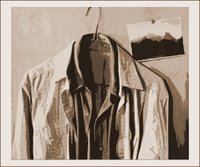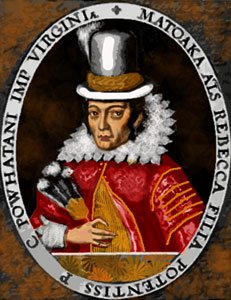
My year’s first surprise was appendicitis in February. I was out of school for about four weeks as the doctor let the incision heal from the inside out—the appendix had perforated and he didn’t want to risk infection. Two major operations within eight months (I had the triple bypass last year) made for an interesting re-evaluation of my priorities.
At the end of May I officially retired from Rich East High School after a total of 39 years of teaching—with 36 of those in Park Forest. I was sure I was going to jump right back into teaching, but nothing substantial appeared — and then I found I liked having my own time schedule and doing what I wanted to and not having to drive two hours to work each day.
As summer began things weren't much different. My garage sale hunts continued with my friends Janet and Kathy. No summer Saturday is complete without a couple of hours searching for finds. Unfortunately this year did not turn out as productive as some of the previous years have. I wondered if in these economically challenging times whether people are keeping more of the good stuff for themselves because they aren’t buying as much. I also did some professional cantoring which provided some good spending money.
It wasn’t until September that I began to really appreciate retirement. As school began in Park Forest, I was relaxing in the mountains of New York. When I returned home a new routine was established.
So what do I do with my time, you ask? Every day begins with a walk over to my local Starbucks where I have friends I see regularly. When they talk about a Starbucks community, I can attest to that. I also use the morning time to read.
During the summer and the fall my Creative Muse took possession of me, concentrating on stretching my computer art doing paper dolls which I now sell. I have done about 60 panels so far this year. If you want to see them, check out here. I even got paid to do a program for St. Bernardine’s Women’s club on the paper dolls. (If you know anyone who might be interested in having me speak, let me know.) I now find myself a professional artist and lecturer.
I also worked at honing my photography and writing skills, keeping this blog online and a posting my photographs.
During the last couple of months I got back into genealogical research. In the distant 1970s I did many of my lines—in fact I got my mother into DAR and myself into SAR and even wrote a book on the Harness line. Recently I joined Ancestry.com which has all census records up to 1930 and extensive ship docket records. After finding my mother's ship crossing to England in 1937, I was hooked again and started updating what I had. It's now evolved into a major research project. I like that it can be online so that anyone who uses Ancestry.com can access the information. Hopefully I will be able to publish more information before the year is out.
While some new opportunities have arisen at some local schools and I may get back into teaching, I have to say I am protective of my new freedom.
I also have done several trips this year, having visited my friend Jon and his family in New York several times. I'll return on Christmas Day for a visit.
Well, Sunday was the second Sunday of Advent and this year there are really only three Sundays of Advent with the fourth Sunday being Christmas Eve. I am still head of Art and Environment and we’ll be scurrying around on Sunday afternoon after the last Mass trying in 3 hours to get everything set up for the evening service. (I console myself that at least I don’t have to do 12 Masses like my friend Jon.)
I hope you are doing well and that the coming year will bring health and happiness. Write soon.
Love









 For over two decades my Saturday nights included the radio show, “A Prairie Home Companion”—often as I drove stretches of Illinois’ cornfields. Many countless hours I spent enjoying the music, drawn into the homespun humor and wisdom of Garrison Keillor and his silly but sometimes pithy comment-filled adventures of Detective Guy Noir. Often, in the midst of fairly mundane patter, I’d hear some epigram of the real that would stay with me. I have remembered—perhaps incorrectly, but nonetheless—a Guy Noir story epigram, “I would rather be burnished with use than rusty from neglect.” Another time, I remember a story Keillor told of Lake Woebegone about how a dove rose up to the rafters during one of the Lutheran minister’s sermons and how everyone sat wondering if it was the Holy Ghost having come to visit them. They are stories that the imagination of radio enhances and the show became routine enjoyment for me.
For over two decades my Saturday nights included the radio show, “A Prairie Home Companion”—often as I drove stretches of Illinois’ cornfields. Many countless hours I spent enjoying the music, drawn into the homespun humor and wisdom of Garrison Keillor and his silly but sometimes pithy comment-filled adventures of Detective Guy Noir. Often, in the midst of fairly mundane patter, I’d hear some epigram of the real that would stay with me. I have remembered—perhaps incorrectly, but nonetheless—a Guy Noir story epigram, “I would rather be burnished with use than rusty from neglect.” Another time, I remember a story Keillor told of Lake Woebegone about how a dove rose up to the rafters during one of the Lutheran minister’s sermons and how everyone sat wondering if it was the Holy Ghost having come to visit them. They are stories that the imagination of radio enhances and the show became routine enjoyment for me.














